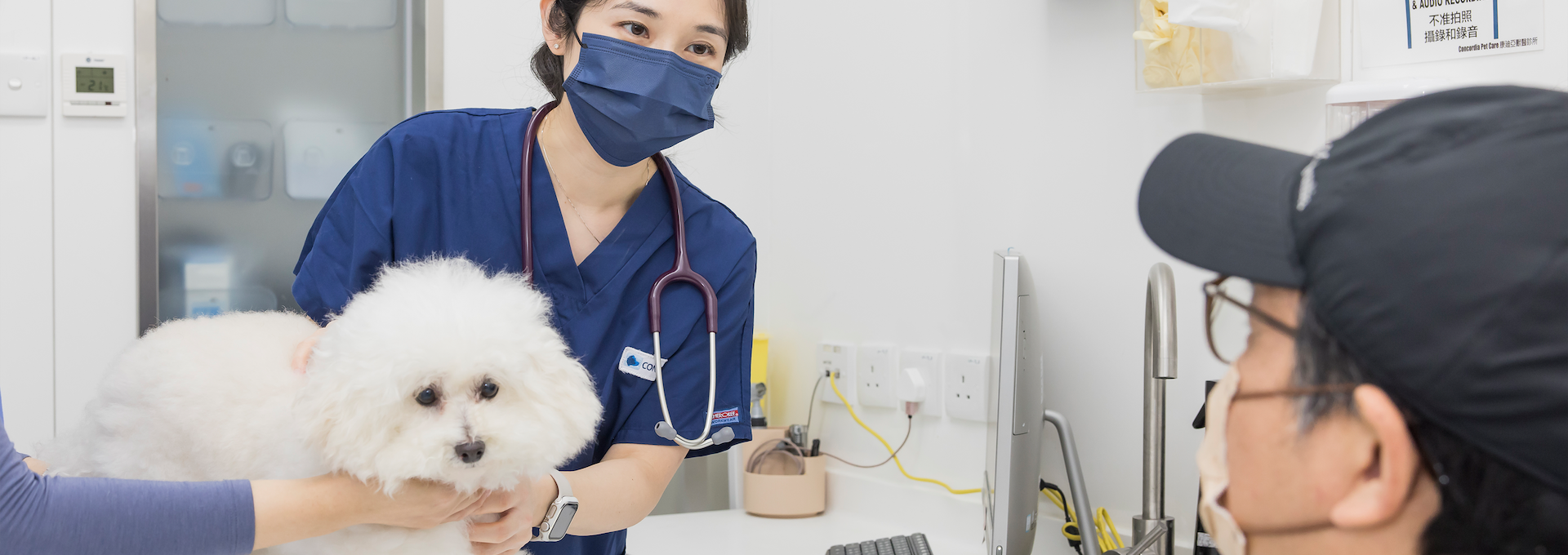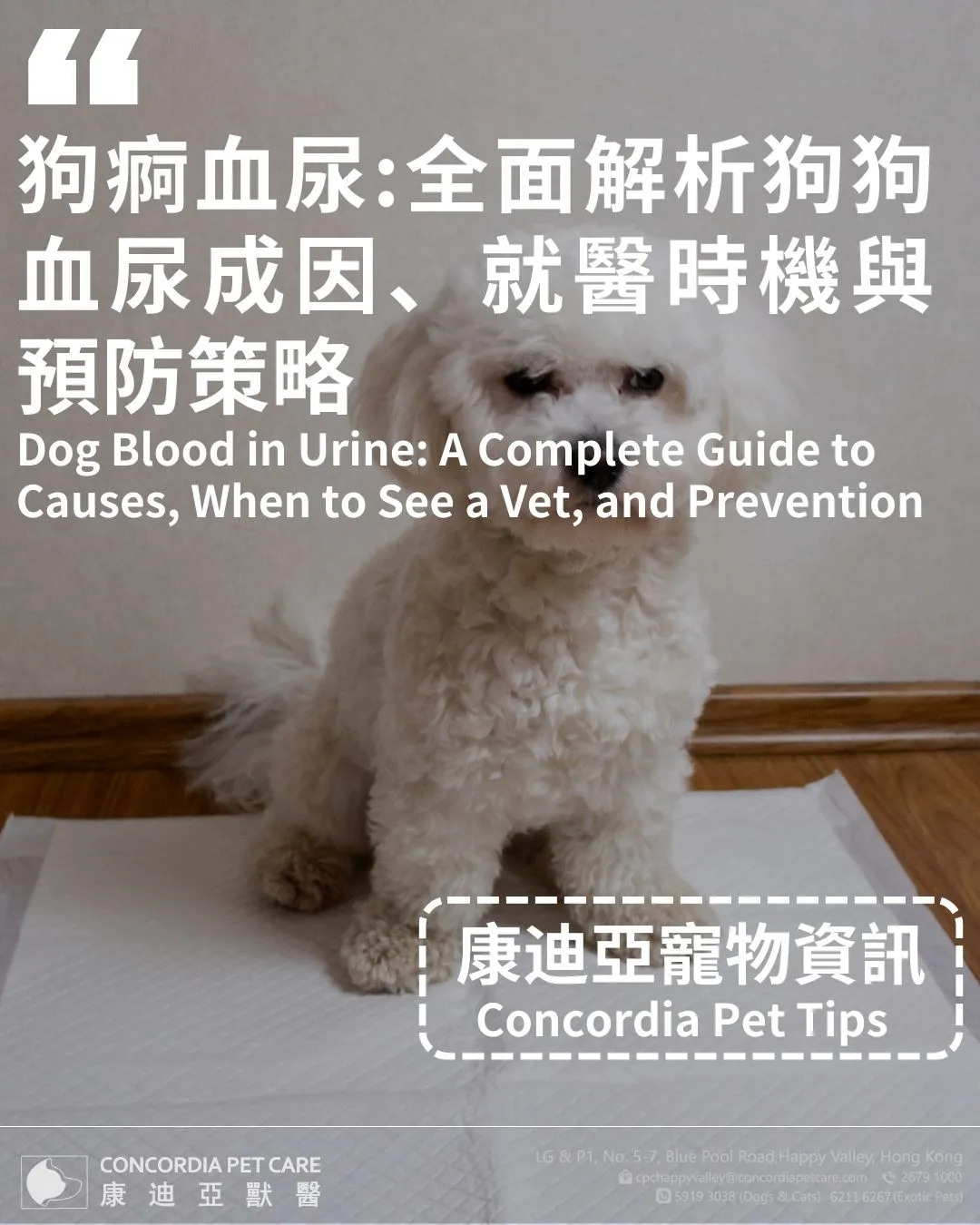
How to Perform Dog CPR | A Step-by-Step Guide
 Concordia Pet Care
Concordia Pet Care
 2025-08-20
2025-08-20


How to Perform CPR on Your Dog — A Step-by-Step Guide for Hong Kong Pet Parents
Emergencies can happen at any time. Knowing how to perform CPR on a dog can make all the difference if your pet suddenly stops breathing or loses consciousness. If you’ve ever wondered how to give CPR to a dog, this guide will show you simple, life-saving steps to follow. At Concordia Pet Care, we believe every pet parent should feel confident in giving dog CPR when it's needed most.
Why Every Second Counts During Dog CPR
When a dog’s heart or lungs stop working, oxygen stops reaching the brain and organs. This can cause damage in minutes. Dog CPR helps keep blood and air moving through the body until you can get to a vet. Learning how to do CPR on a dog before an emergency happens means you’ll know what to do when it really matters.
Common Causes of Cardiopulmonary Arrest in Dogs
Your dog may stop breathing or lose their heartbeat due to:
●Choking
●Trauma or injury
●Electric shock
●Heart disease
●Poisoning
●Drowning or heatstroke
Survival Rates When CPR Is Started Early
Starting CPR quickly, ideally within the first two minutes, greatly increases the chance of survival. That’s why it is important to know how to perform CPR on a dog ahead of time, even if you hope you will never need it.
Rapid Assessment Checklist — Is Your Dog Really in CPA?
Before starting CPR, you need to be sure your dog is truly in cardiopulmonary arrest (CPA).
Checking Responsiveness, Breathing & Pulse
●Say your dog’s name or tap them gently
●Watch for chest movement or feel for air at the nose
●Feel for a pulse on the inside of the hind leg
If there is no response, no breathing, and no pulse, start performing CPR on the dog immediately.
Clearing the Airway Safely
Open the mouth, pull the tongue forward, and check for anything blocking the throat. Remove it if it’s safe to do so.
Preparing for CPR: Safe Setup, Help Lines & Vet Contacts in Hong Kong
Lay your dog on a flat surface in a safe space. Call your vet or emergency clinic. In Hong Kong, the SPCA emergency number is +852 2711 1000. It’s best to save this contact in your phone.
Step-by-Step Dog CPR Instructions
Positioning Your Dog Correctly (Side vs. Back)
Place your dog on their right side. For dogs with a wide, barrel chest, it may be better to place them on their back.
Hand Placement & Compression Depth by Size
●Small dogs: Use your fingers or one hand
●Medium to large dogs: Use both hands on the widest part of the chest
Push about one-third of the chest depth.
Chest Compressions — 100–120 per Minute
Push down quickly and firmly, letting the chest return fully each time.
Mouth-to-Snout Breaths — Creating an Airtight Seal
Close your dog’s mouth and breathe into the nose until the chest rises. Be gentle and steady. Do not overinflate, as this may damage the lungs. Do this after every 30 compressions.
Compression-Breath Cycle (30:2 Ratio)
Repeat 30 compressions and 2 breaths. If you have ever wondered, “How do you give a dog CPR?” This is the standard method.
Switching Rescuers to Prevent Fatigue
If someone is with you, take turns every 2 minutes to keep compressions strong.
Breed & Size Modifications
Toy & Small Breeds
Use gentle pressure and fewer fingers. Smaller dogs have fragile chests.
Medium Breeds
Follow the general steps above, adjusting hand size and strength as needed.
Large & Barrel-Chested Breeds
If needed, place them on their back and compress the chest from above.
Flat-Faced (Brachycephalic) Dogs
Take extra care with the airway. Use gentle, shorter breaths if needed.
After-Care: Transporting Your Dog to the Vet & Monitoring for Shock
Even if your dog starts breathing again, take them to the vet right away. Watch for pale gums, shaking, or fast breathing. Keep your dog calm and warm during the trip. Continue to speak to them gently to offer comfort.
Dog CPR — Important Notes for Pet Parents
Even if your dog starts breathing again, take them to the vet right away. Watch for pale gums, shaking, or fast breathing. Keep your dog calm and warm during the trip.
Top Mistakes to Avoid When Giving Dog CPR
●Starting CPR too late
●Using the wrong hand placement
●Not checking for breathing or a pulse
●Forgetting to call your vet for help
●Pressing too hard on small dogs
Hands-On CPR Guidance at Concordia Pet Care
Concordia Pet Care is here to support Hong Kong pet parents with expert care, gentle guidance, and helpful advice. If you want to learn more about how to give CPR to a dog, bring your dog in for a checkup and we will demonstrate how to perform CPR on your dog gently and safely. We are always happy to help.
Frequently Asked Questions About Dog CPR
How long should I continue CPR before stopping?
According to the American Veterinary Medical Association (AVMA), dog CPR should continue until one of the following scenarios happens:
●Your dog starts breathing again, or their heart starts beating on its own.
●A veterinarian or trained professional takes over.
●The person performing dog CPR becomes too exhausted to continue safely. If possible, switch with another person to avoid fatigue and maintain effective compressions.
Can I break my dog’s ribs during compressions?
It is possible, especially in small breeds. But doing dog CPR properly gives your dog the best chance.
What if I’m alone and can’t reach a vet quickly?
Start CPR immediately. After two minutes, call for help and continue CPR as best you can.
Should I take a certified pet CPR course?
Yes. Practicing how to do CPR on a dog in a class helps you stay calm and act quickly during an emergency.



